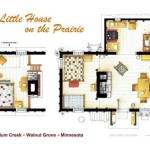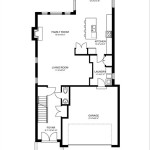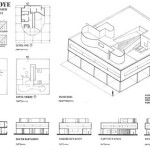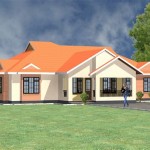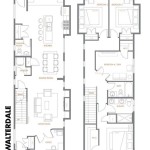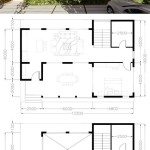Large Greenhouse Planters: Maximizing Space and Yield
Large greenhouse planters offer significant advantages for commercial growers and serious hobbyists alike. They provide ample space for root development, leading to healthier, more productive plants. Their size also allows for efficient use of greenhouse space, maximizing yield per square foot. This article will explore the various types of large greenhouse planters, their benefits, and important considerations for selection and implementation.
Several types of large greenhouse planters cater to different needs and growing styles. Raised beds, constructed from wood, metal, or plastic, are a popular choice. They offer excellent drainage and can be customized to fit specific dimensions. Troughs, typically long and narrow, are ideal for crops like lettuce or herbs, allowing for dense planting and easy harvesting. Dutch buckets, a hydroponic system, provide individual plant spaces with a nutrient-rich solution delivered directly to the roots. Fabric grow bags, made of breathable, porous material, promote healthy root growth and air pruning. Finally, large plastic pots, available in various shapes and sizes, offer versatility and portability.
One of the primary benefits of large greenhouse planters is the enhanced root development they facilitate. Ample space allows roots to spread freely, accessing more nutrients and water. This leads to stronger, more vigorous plants capable of supporting higher yields. Improved drainage also reduces the risk of root rot and other soilborne diseases, promoting overall plant health.
Space optimization is another key advantage of large greenhouse planters. By utilizing vertical space with stacked planters or tiered systems, growers can significantly increase production within a limited footprint. This is particularly beneficial in commercial settings where maximizing yield per square foot is crucial for profitability.
Choosing the right type of large greenhouse planter depends on several factors, including the type of crop being grown, the greenhouse environment, and budget constraints. For example, crops with deep root systems, like tomatoes or cucumbers, will benefit from raised beds or deep pots. Hydroponic systems, like Dutch buckets, are well-suited for controlled environment agriculture, offering precise nutrient delivery. Fabric grow bags are a lightweight and cost-effective option for many crops.
The material of the planter is another important consideration. Wood provides a natural aesthetic but requires regular maintenance to prevent rot. Metal offers durability but can be expensive. Plastic is a cost-effective and lightweight option, but its durability can vary depending on the quality. Fabric grow bags, while lightweight and breathable, may not be as durable as other options.
Proper drainage is essential for any greenhouse planter. Ensure that the planter has adequate drainage holes to prevent waterlogging, which can lead to root rot and other problems. The growing medium used in the planter should also be well-draining and appropriately matched to the specific crop's needs.
When using large greenhouse planters, it's important to consider the weight capacity of the greenhouse structure. Heavier planters, especially when filled with soil and water, can put significant stress on the flooring and supporting structures. Ensure the greenhouse can safely accommodate the weight of the chosen planters.
Irrigation systems can be integrated with large greenhouse planters for efficient watering. Drip irrigation systems deliver water directly to the base of each plant, minimizing water waste and promoting even moisture distribution. Automated systems can further streamline the watering process, saving time and labor.
Pest and disease management are crucial for successful greenhouse growing. Large planters can help contain infestations and prevent the spread of disease. Regular monitoring and appropriate preventative measures are essential for maintaining plant health and maximizing yields.
Accessibility is another factor to consider when selecting large greenhouse planters. Ensure that the planters are positioned in a way that allows for easy access for planting, maintenance, and harvesting. Walkways and spacing between planters should be sufficient for comfortable movement and maneuverability within the greenhouse.
The cost of large greenhouse planters can vary significantly depending on the type, material, and size. When budgeting for planters, consider not only the initial purchase price but also the cost of associated components like irrigation systems, growing media, and supports.
Regular maintenance of large greenhouse planters is essential for their longevity and effectiveness. Clean planters thoroughly between crops to remove any residual soil or debris that could harbor pests or diseases. Inspect planters for damage and repair or replace as needed. Proper maintenance will ensure the continued productivity and longevity of the investment.

Raised Garden Bed Designs Growing Spaces Greenhouses

49 Creative Greenhouse Ideas For Year Round Gardening Backyard Modern Greenhouses Small

Commercial Growing Greenhouse Benches Gothic Arch

Raised Garden Bed Designs Growing Spaces Greenhouses

Outdoor Living Today 8 Ft X 12 Cedar Garden In A Box With Greenhouse Cover Rb812gho The Home Depot

Fun Greenhouse Ideas For Your Yard

Outsunny Raised Garden Bed Planter Box With Greenhouse Large Window Diy At B Q

Greenhouses Aim To Bring Fresh Produce North Putting A Dent In Food Insecurity Cbc News

Guide To Rochester Area Nurseries And Greenhouses

Twilight Meeting For Greenhouses Nurseries And Garden Centers Extension

